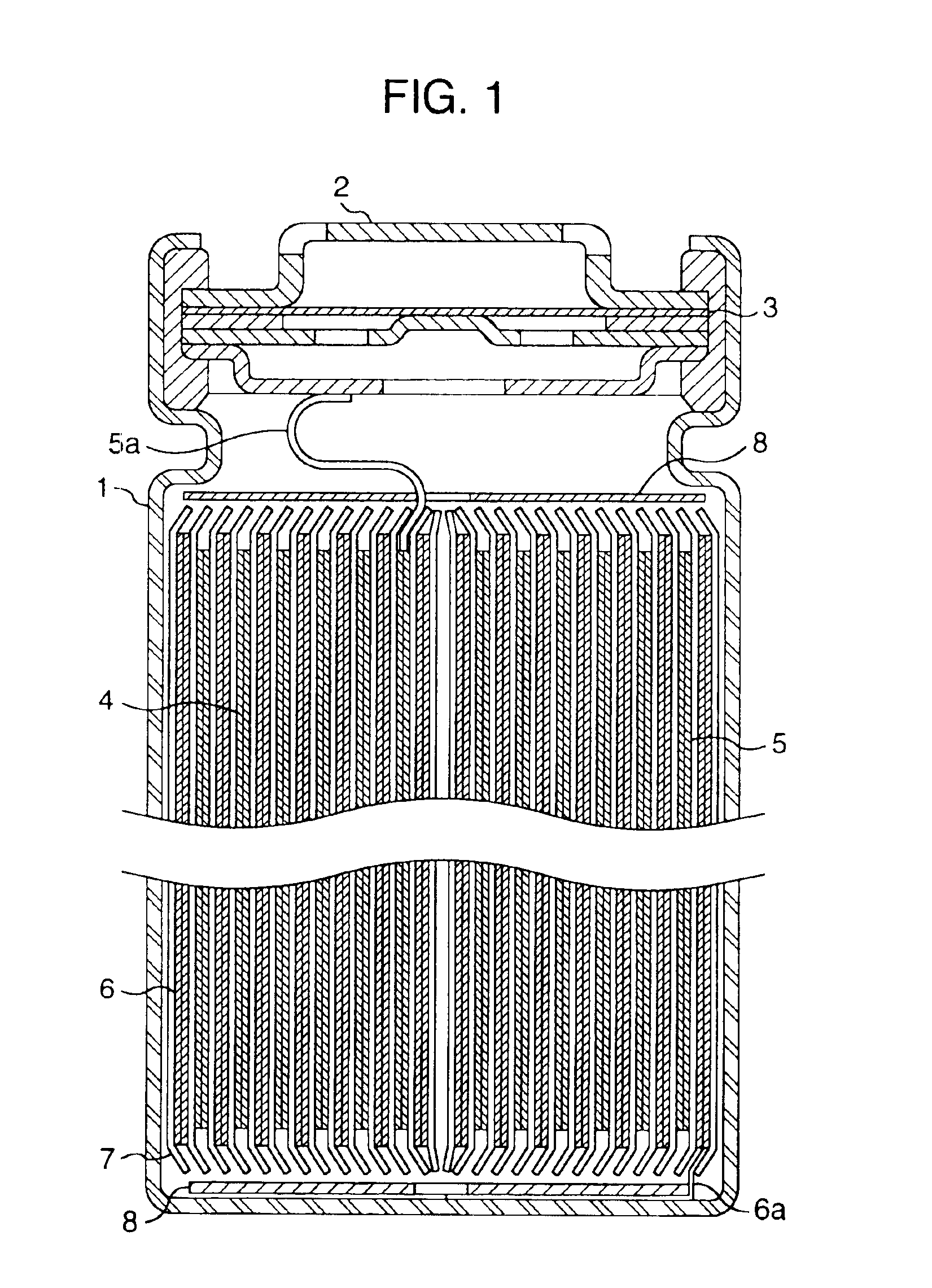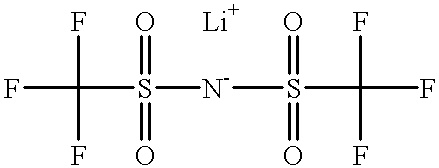Non-aqueous electrochemical apparatus
a technology of electrochemical equipment and electrochemical discharge, which is applied in the manufacture of non-aqueous electrolyte cells, electrochemical generators, and final products. it can solve the problems of deterioration of life characteristics, high rate discharge characteristics, and inability to completely wet separators with some electrolytes, so as to improve the wettability of electrodes or separators with electrolyte, improve life characteristics, and improve the effect of electrochemical discharg
- Summary
- Abstract
- Description
- Claims
- Application Information
AI Technical Summary
Benefits of technology
Problems solved by technology
Method used
Image
Examples
example 1
Measurement of Surface Free Energy of Electrode
[0100]Positive electrode A was made by mixing 85% by weight of a lithium cobaltate powder, 10% by weight of a carbon powder as a conducting agent and 5% by weight of a polyvinylidene fluoride resin as a binder, dispersing the mixture in dehydrated N-methyl-pyrrolidinone to prepare a slurry, coating the slurry on a positive electrode current collector comprising an aluminum foil, drying the coat and rolling the coated foil. Positive electrode B was made by dispersing 85% by weight of a lithium cobaltate powder, 10% by weight of a carbon powder as a conducting agent and 5% by weight of polytetrafluoroethylene in an aqueous carboxymethyl cellulose solution to prepare a slurry, coating the slurry on a positive electrode current collector comprising an aluminum foil, drying the coat and rolling the coated foil.
[0101]A droplet of each of ethanol (surface tension: 24 dynes / cm), p-xylene (31 dynes / cm), trimethyl phosphate (40 dynes / cm), ethylen...
example 2
Method of Production of Cylindrical Battery
[0108]FIG. 1 is a longitudinal sectional view of a cylindrical battery of the present invention. A positive electrode 5 and a negative electrode 6 and a separator 7 interposed therebetween are rolled a plurality of times into a spiral form and are inserted in a battery case 1. A positive electrode lead 5a is drawn from the positive electrode 5 and connected to a sealing plate 2, and a negative electrode lead 6a is drawn from the negative electrode 6 and connected to the bottom of the battery case 1. The battery case or lead plate may be made of a metal or metal alloy having organic electrolyte resistance and electron conductivity. For example, there may be used metals such as iron, nickel, titanium, chromium, molybdenum, copper and aluminum, and alloys of these metals. The battery case is most preferably made by working a stainless steel plate or Al—Mn alloy plate, and the positive electrode lead and the negative electrode lead are most pre...
example 3
[0119]The positive electrode and the negative electrode constituting the electrode plate group 4 were prepared in the following manner.
[0120]
[0121]Three parts by weight of acetylene black and 7 parts by weight of fluorocarbon resin binder were mixed with 100 parts by weight of a LiCoO2 powder, and the mixture was suspended in an aqueous carboxymethyl cellulose solution to prepare a paste of positive electrode mix. This paste was coated on an aluminum foil of 30 μm in thickness and dried, followed by rolling to make a positive electrode of 0.18 mm in thickness, 37 mm in width and 390 mm in length.
[0122]
[0123]A mesophase spherule which was graphitized at a high temperature of 2800° C. (hereinafter referred to as “mesophase graphite”) was used. Five parts by weight of styrene-butadiene rubber was mixed with 100 parts by weight of the mesophase graphite, and then the mixture was suspended in an aqueous carboxymethyl cellulose solution to prepare a paste of negative electrode mix. This p...
PUM
| Property | Measurement | Unit |
|---|---|---|
| surface free energy γse | aaaaa | aaaaa |
| surface free energy γss | aaaaa | aaaaa |
| surface tension γl | aaaaa | aaaaa |
Abstract
Description
Claims
Application Information
 Login to View More
Login to View More - R&D
- Intellectual Property
- Life Sciences
- Materials
- Tech Scout
- Unparalleled Data Quality
- Higher Quality Content
- 60% Fewer Hallucinations
Browse by: Latest US Patents, China's latest patents, Technical Efficacy Thesaurus, Application Domain, Technology Topic, Popular Technical Reports.
© 2025 PatSnap. All rights reserved.Legal|Privacy policy|Modern Slavery Act Transparency Statement|Sitemap|About US| Contact US: help@patsnap.com



